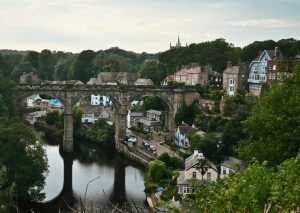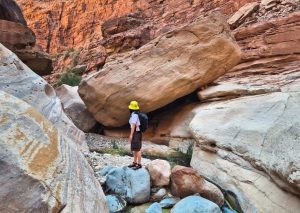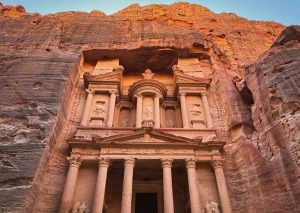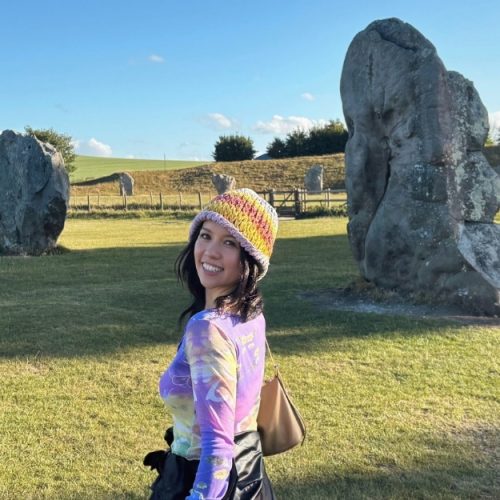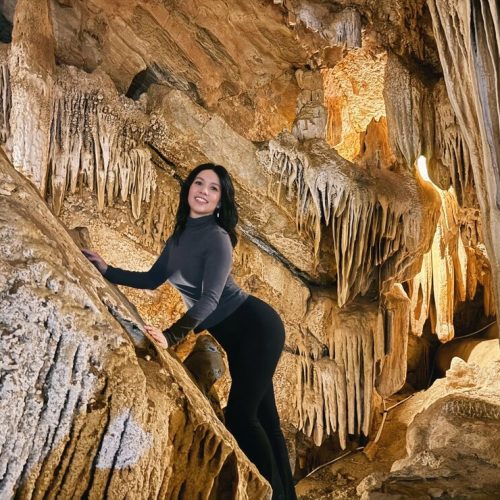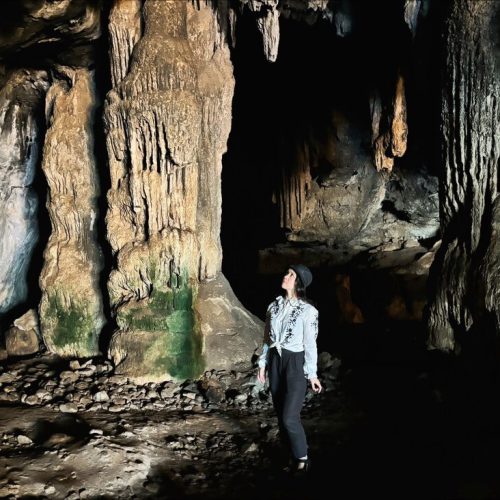
Mamallapuram was without doubt the most spectacular place I visited in Tamil Nadu. Also known as Mahabalipuram, the city is famous for being home to an array of stunning rock-cut temples.
The temples here weren’t just built – they were carved. Not stacked stone by stone, but chiseled straight from living rock by Pallava artisans around the 7th century. And not for show. These were bold political statements, religious devotion, and architectural flexing all rolled into one.
The monuments in Mamallapuram can be divided into four categories: bas reliefs, structured temples, man-made caves and monolithic rathas (chariots). It’s hard to find something like this anywhere else in the world. The level of artistry and intricacy is mind-boggling. In acknowledgement, the city’s monuments were added to the UNESCO World Heritage List in 1984.
Who were the Pallavas?
The Pallavas were a powerful ancient dynasty that ruled a huge part of Southern India, including present day Tamil Nadu, between the 6th and 9th centuries AD.
The Pallavas’ greatest legacy was their contribution to architecture, and many of their most celebrated works can be found in Mamallapuram. They are credited with introducing the Dravidian style of temple architecture. Dravidian architecture primarily consists of temples with pyramid shaped towers and are constructed of sandstone, soapstone or granite.
The first Pallava shrines were rock-cut cave temples. Gradually, these evolved to monolithic shrines carved out of huge rocks, and finally culminated in pyramid style or ‘structural temples’ built from scratch. To see all of these stages together, Mamallapuram is the place go.
Must-see rock monuments and cave temples in Mamallapuram
There are many rock monuments and cave temples in Mamallapuram, it would be difficult to see them all with limited time. Instead, these are the ones you simply shouldn’t miss.
Pancha Rathas

The five rathas are monolithic temples that resemble wooden chariots believed to have been built approximately 1300 years ago.
Upon seeing the entire complex it’s hard to conceive how they were all carved out of one solid block of rock just like Kailasa Temple in Maharashtra. Each ratha looks like an individual structure, but if you look closely at their base you will notice how they are all adjoined.

Each ratha has been named after one of the five Pandava brothers, the heroes of the epic Mahabharata, and their wife, Draupadi.
Admittedly, even though incredible detail has gone into the rathas – each adorned with hundreds of carvings of Hindu gods, my favourite structure in the complex is the beautiful life-sized elephant!
Shore Temple

The Shore Temple is dedicated to two Hindu Gods: Shiva and Vishnu. It dates way back to the early 8th Century and is considered to be the earliest stone-built structural temple across the whole of South India. As you would expect, it has earned its place in Indian history, giving it great cultural importance.
Located by the beach overlooking the Bay of Bengal, the temple is exposed to wind, salt and sand which over the years has eroded away some of temple’s detailed carving. The tsunami of 26 December 2004 that occurred in the Indian Ocean struck the temple, but luckily it was not badly damaged. Soon afterwards, protection methods were erected around the temple area on the coastline to ensure its protection.
An admired quality of the temple is how it interacts with light. Said to capture the first rays of the rising sun in the morning – it is therefore best to visit during sunrise or sunset.
Learn more about Hindu Gods → Hindu Gods & Goddesses to Meet on a Visit to India
Descent of the Ganges

This 1400 year-old incredible bas-relief is like a vast piece of intricate tapestry. It’s remarkably well-kept. At around 90 feet wide and almost 40 feet tall, you could get lost in all the detail.
Sometimes known as “Arjuna’s penance”, it was initially believed to depict Arjuna performing penance to please Lord Shiva and to obtain the Pashupatastra. The Pashupatastra is considered to be one of the most powerful and fierce weapons mentioned in Hindu scriptures and epics. You will see Lord Shiva depicted with this weapon all across India.
However, popular consensus of the bas-relief depicts the story of Bhagiratha Prayatna who brought down the river Ganges to earth from the heavens. In the photo you can see the fissure that runs down the middle of the rock. It’s hard to know if this fissure occurred naturally or whether it man-made. Eitherway, it is supposed to represent the river Ganges. As you are probably well aware by now, India is full of symbolism.
Tiger Cave

Located around 5km away from the centre of town is Tiger Cave. Not a cave a such, but rather more akin to a bas-relief. Nonetheless, the site earned its name from its crown of 11 tiger-esque heads carved around the entrance to its mouth.
Despite its name, the animal depicted in stone is up for debate. Some historians believe the figures are more likely that of a mythological animal called a “yeli”. A yeli has the head of lion or tiger with the tusks of an elephant and the tail of a serpent. I’ll let you decide!
Varaha Cave Temple
The Varaha Cave Temple holds both historical and religious importance. It not only showcases the artistic achievements of the Pallava dynasty but also serves as a place of worship for devotees of Lord Vishnu.
The highlight of the Varaha Cave Temple is undoubtedly the colossal bas-relief sculpture of Lord Vishnu as Varaha rescuing Goddess Earth (Bhudevi). This intricate sculpture depicts Lord Vishnu lifting Bhudevi from the ocean, symbolizing the divine intervention to save the Earth from the primordial waters.
Krishna’s Butter Ball

Although Krishna’s Butter Ball isn’t a rock-cut temple or cave, I just had to include it in this list. It’s a rock so I think it just about counts. Located just a few minutes’ walk away from Varaha Cave Temple, it’s possible to miss. You can read more about this quirky rock here.
If you want to see more rock formations and geological wonders from around the world, check out this list → 14 Unique Rock Formation From Around the World.
You might also like → Visit the Best Angkor Temples (Including Angkor Wat)
Where to stay in Mamallapuram
You have quite a few different accommodation types to choose from in Mamallapuram. It all really depends on your budget, preferred amenities, proximity to attractions, and the type of experience you want to have.
Most visitors opt to stay around the Shore Temple and the beachside heritage zone. This area is the sweet spot where culture, history, and a laid-back coastal vibe come together.
If you prefer something smaller with a more local vibe, stay closer to the centre of town. You’ll have lots of restaurants on your doorstep too. I recommend taking a look at guesthouses around Othavadai Street and East Raja Street.
→ Search hotels in Mamallapuram / Mahabalipuram
Would you like to see the ornate cave temples of Mamallapuram?
If you’re planning your own trip to India and Mamallapuram, save this post for later by pinning it!




